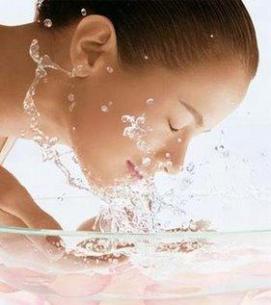When women with acne come to the clinic, they invariably ask ‘what changes can I make in my life to improve things?’ There is often a frustration that, despite a pristine diet and exercise programme, that nothing they do makes it any better. And therein lies the problem. Frustration….anxiety…. the downward spiral of acne doom. Which leads to the frenetic skincare hopping behaviour that is so often a key driver to the skin blowing up.
And what this repeated observation has led me to muse, is that adopting sensible, rational skincare approaches (an anxiety-relieving act in itself by virtue of taking the guesswork out of skincare) is probably synergistic with adjusting the female mindset. I’ve heard so many times about the ritualistic way women will get home from work, remove make-up (‘because its bad for my skin’) and then spend the evening playing peekaboo with their magnifying mirror, squeezing everything in sight. Occasionally with tweezers. In fact, the disabling variant of acne known as acne excoriee is sometimes largely a consequence of human behaviour; the acne itself may not be so severe, but the fallout of self-help can be disastrous, leading to pot-hole scars and persistent pigmentation. I see this a lot in women with adult acne and the cycle can be extremely disabling – even though they know its harmful, they can’t help themselves.
So of late, I’ve been recommending the following ‘tricks’ to try to break some of these detrimental habits – I firmly believe that you need short-term strategy to get you through the first 4-6 weeks of any acne treatment programme because there is almost always a timelag to improvement (I don’t see patients until 10-12 weeks in for this reason). These might seem silly, daft or even frivolous – but I think that anything that might give you a bit of skin-control back is worth a try.
1) Put your magnifying mirror in the bin.
Start to view yourself as others do. From 1m away. People are simply not as observant as you think.
2) Adjust the lighting in your bathroom.
If it isn’t kind ie harsh, overhead and megabright, soften it. This is a simple frame-shift that takes the pressure off and helps you stop obsessing about every potential bump in your skin.
3) Keep your make-up on until bed.
Yes, that’s right – in this instance, make-up is not your enemy. Its your shield. This is based on the assumption that you have made smart choices – see here.
Winning brands are labeled non-comedogenic ; good choices include Nars, Vichy Dermablend, Armani and Lancome. Then whip it off last-thing, do your skincare regime and then straight to bed with you. No dilly-dallying at the mirror.
4) Keep the weapons short.
Fingernails are usually the weapons of choice when it comes to picking or fiddling – so perform damage limitation by embracing a short, chic mani.
5) If the urge to pick is very strong, try meditation.
I think the Headspace app is absolutely brilliant for calmly asserting authority over that swirl of thoughts in your head that can drive certain types of behaviour – anything that gives you ‘headspace’ from acne is of value, in my book.
 Attending the Oscars:for a nominee, this may well be the pinnacle of their career and the world is watching. Its also the perfect opportunity for an emerging talent to showcase themselves so putting their best face forward is vital. At the BAFTAS earlier this month, I got to see the nominees firsthand, where Rosamund Pike was a real standout for me. Her skin looked extraordinary, her presence was both commanding and womanly; she completely owned her beauty. Subtle and deft make-up was of course in evidence, but you could tell the ‘canvas’ was in tip-top form. Getting skin into impeccable condition is a beauty fundamental for every actress – this is not the time for blemishes. So here’s my 12-week timeline to getting the kind of skin that light loves and you can’t take your eyes off. This is a great approach for brides approaching their big day – their own personal red carpet experience.
Attending the Oscars:for a nominee, this may well be the pinnacle of their career and the world is watching. Its also the perfect opportunity for an emerging talent to showcase themselves so putting their best face forward is vital. At the BAFTAS earlier this month, I got to see the nominees firsthand, where Rosamund Pike was a real standout for me. Her skin looked extraordinary, her presence was both commanding and womanly; she completely owned her beauty. Subtle and deft make-up was of course in evidence, but you could tell the ‘canvas’ was in tip-top form. Getting skin into impeccable condition is a beauty fundamental for every actress – this is not the time for blemishes. So here’s my 12-week timeline to getting the kind of skin that light loves and you can’t take your eyes off. This is a great approach for brides approaching their big day – their own personal red carpet experience.





 e easiest to use and the benefits are immediately obvious – they provide thorough make-up removal without the need for double-cleansing and provide better penetration of serums and moisturiser used afterwards. They also look and feel …. well, fun. A little bit like high-end sex-toys. BUT they can also completely wreck your skin if used wrongly.
e easiest to use and the benefits are immediately obvious – they provide thorough make-up removal without the need for double-cleansing and provide better penetration of serums and moisturiser used afterwards. They also look and feel …. well, fun. A little bit like high-end sex-toys. BUT they can also completely wreck your skin if used wrongly.